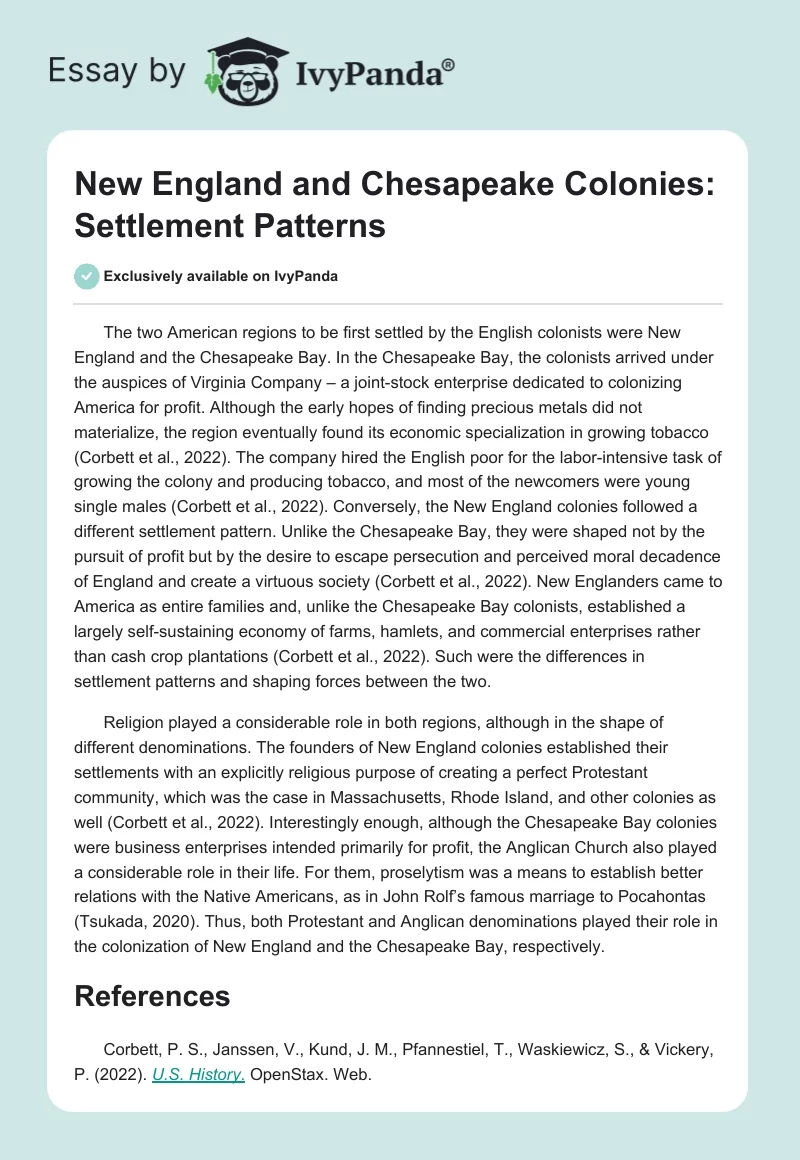The two American regions to be first settled by the English colonists were New England and the Chesapeake Bay. In the Chesapeake Bay, the colonists arrived under the auspices of Virginia Company – a joint-stock enterprise dedicated to colonizing America for profit. Although the early hopes of finding precious metals did not materialize, the region eventually found its economic specialization in growing tobacco (Corbett et al., 2022). The company hired the English poor for the labor-intensive task of growing the colony and producing tobacco, and most of the newcomers were young single males (Corbett et al., 2022). Conversely, the New England colonies followed a different settlement pattern. Unlike the Chesapeake Bay, they were shaped not by the pursuit of profit but by the desire to escape persecution and perceived moral decadence of England and create a virtuous society (Corbett et al., 2022). New Englanders came to America as entire families and, unlike the Chesapeake Bay colonists, established a largely self-sustaining economy of farms, hamlets, and commercial enterprises rather than cash crop plantations (Corbett et al., 2022). Such were the differences in settlement patterns and shaping forces between the two.
Religion played a considerable role in both regions, although in the shape of different denominations. The founders of New England colonies established their settlements with an explicitly religious purpose of creating a perfect Protestant community, which was the case in Massachusetts, Rhode Island, and other colonies as well (Corbett et al., 2022). Interestingly enough, although the Chesapeake Bay colonies were business enterprises intended primarily for profit, the Anglican Church also played a considerable role in their life. For them, proselytism was a means to establish better relations with the Native Americans, as in John Rolf’s famous marriage to Pocahontas (Tsukada, 2020). Thus, both Protestant and Anglican denominations played their role in the colonization of New England and the Chesapeake Bay, respectively.
References
Corbett, P. S., Janssen, V., Kund, J. M., Pfannestiel, T., Waskiewicz, S., & Vickery, P. (2022). U.S. History. OpenStax. Web.
Tsukada, H. (2020). A ground model and Opechancanough’s peace. Web.


